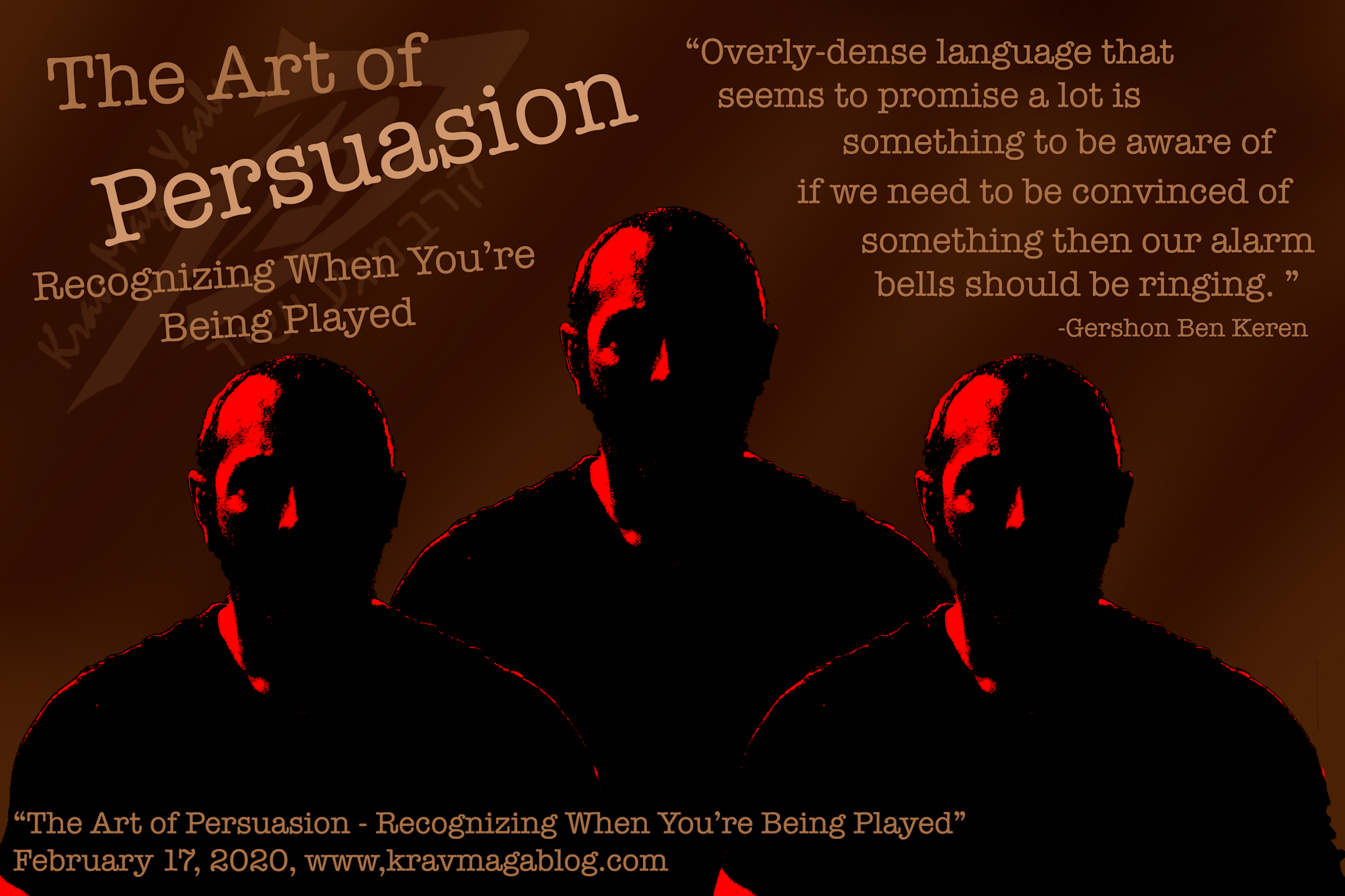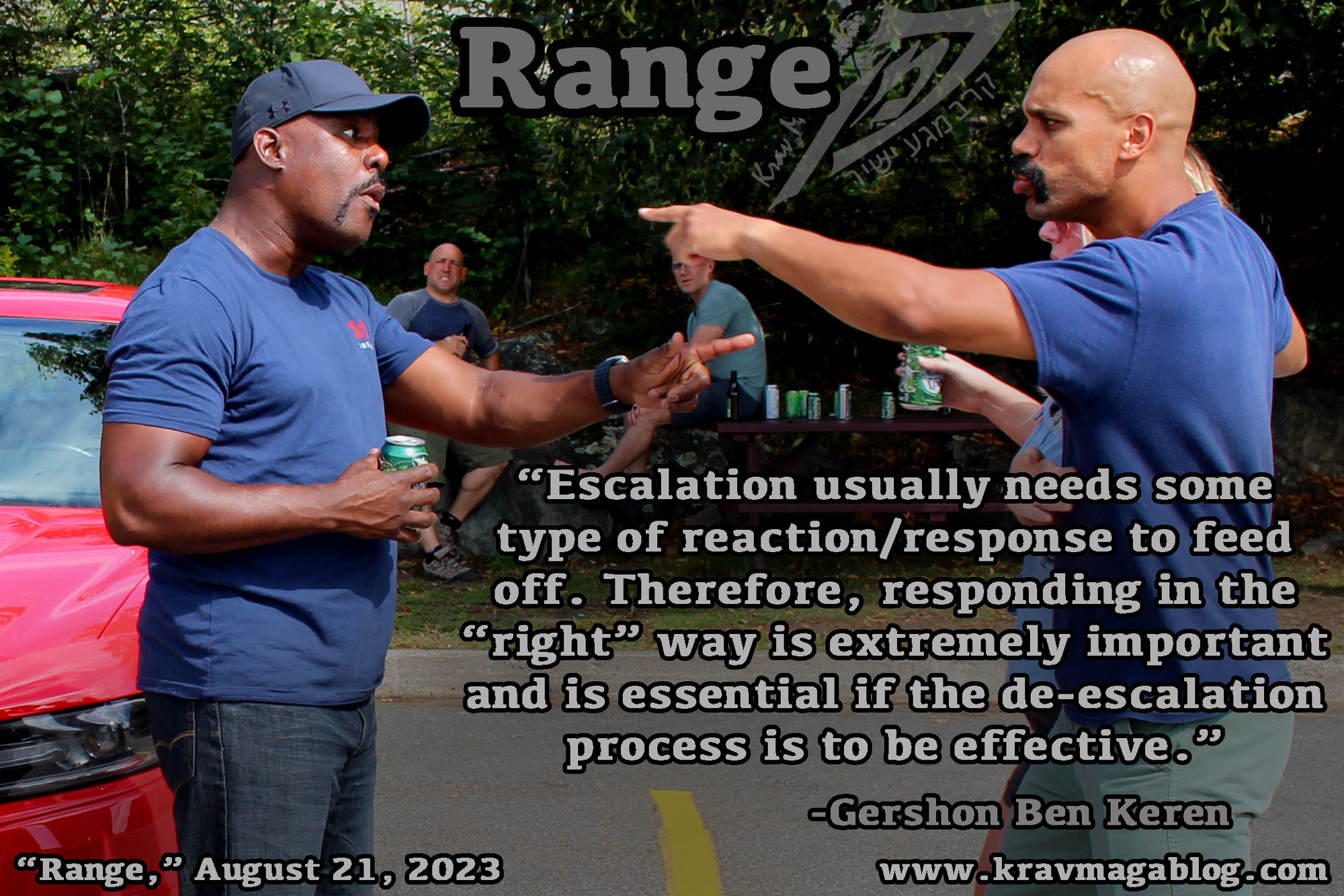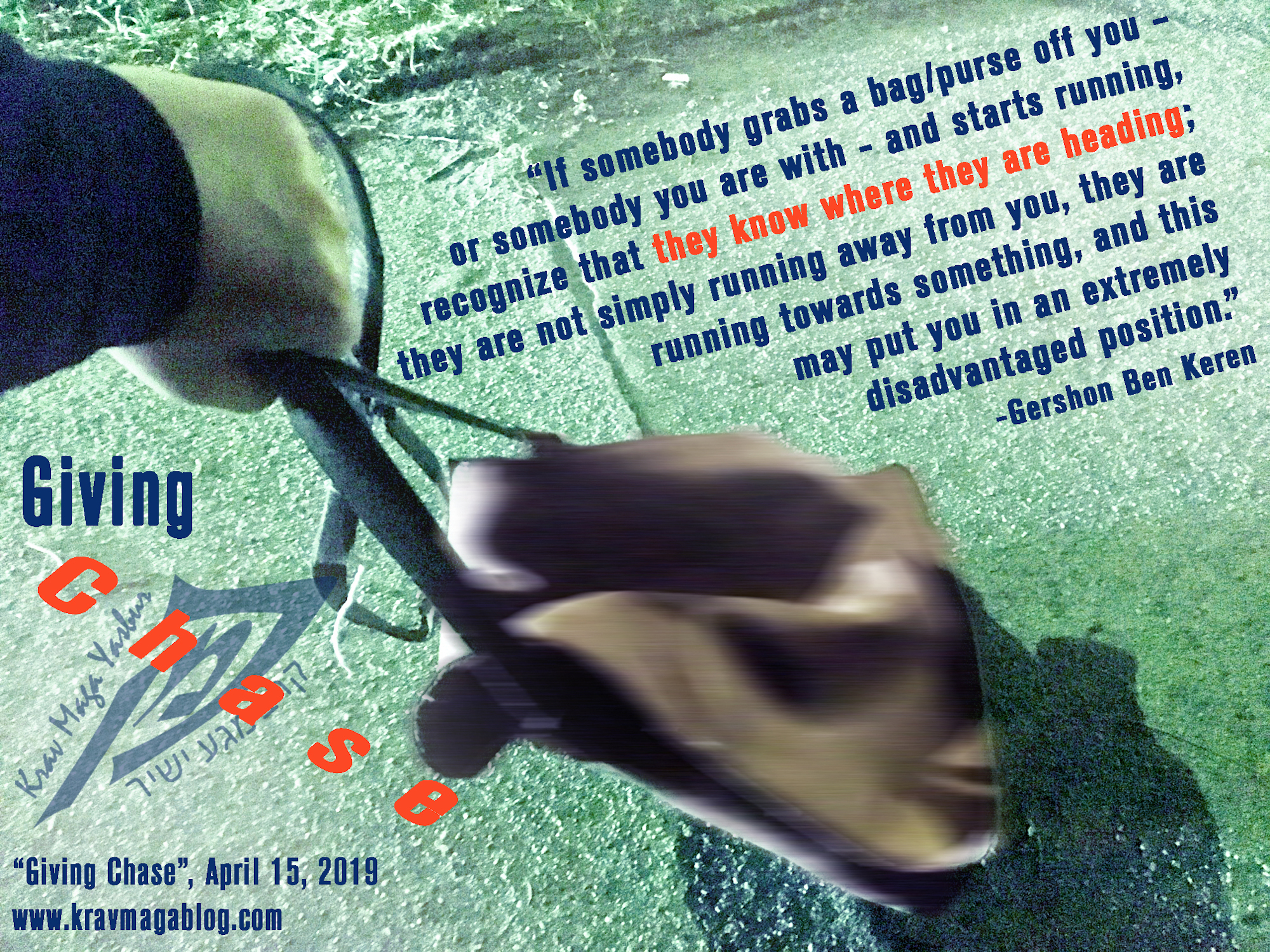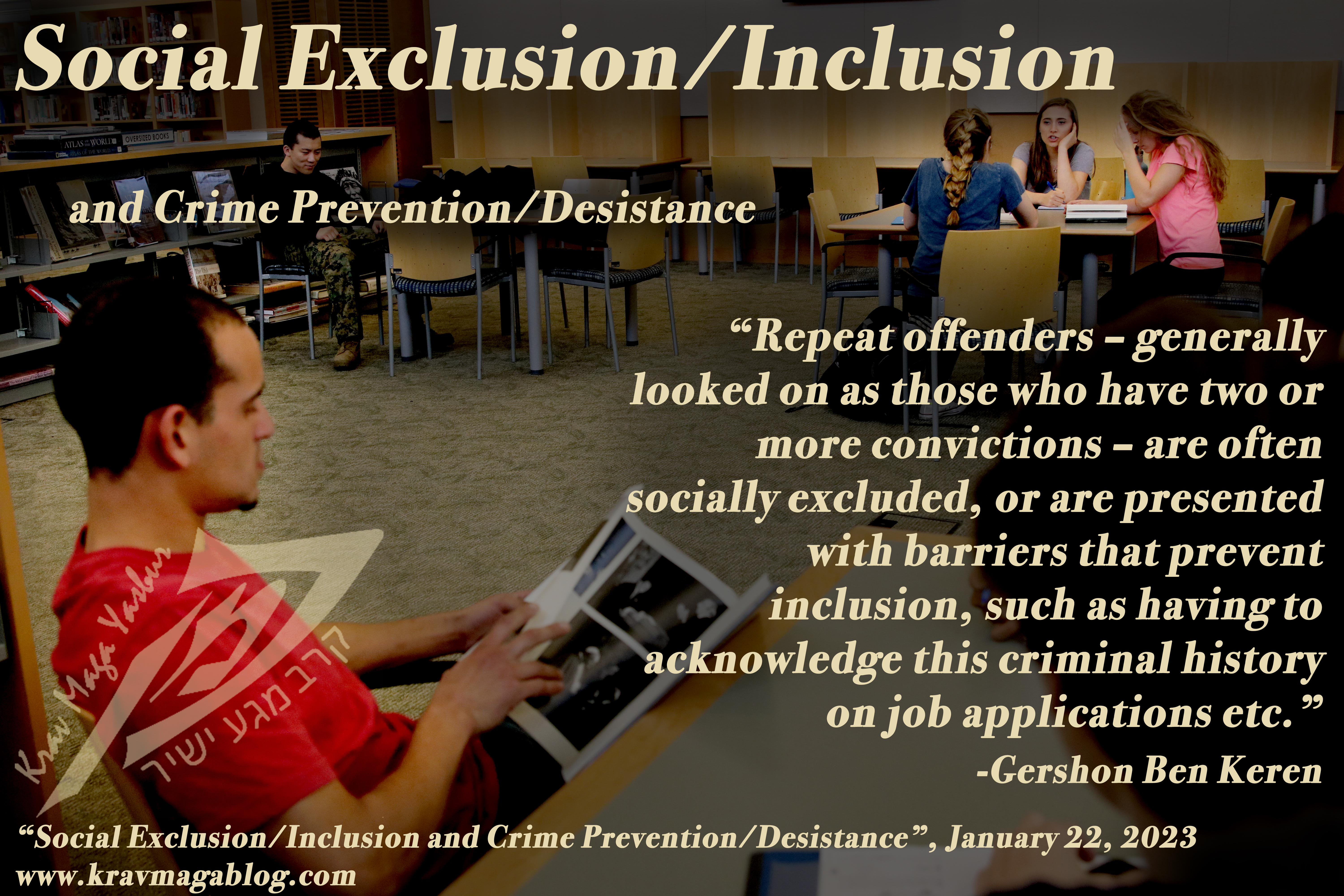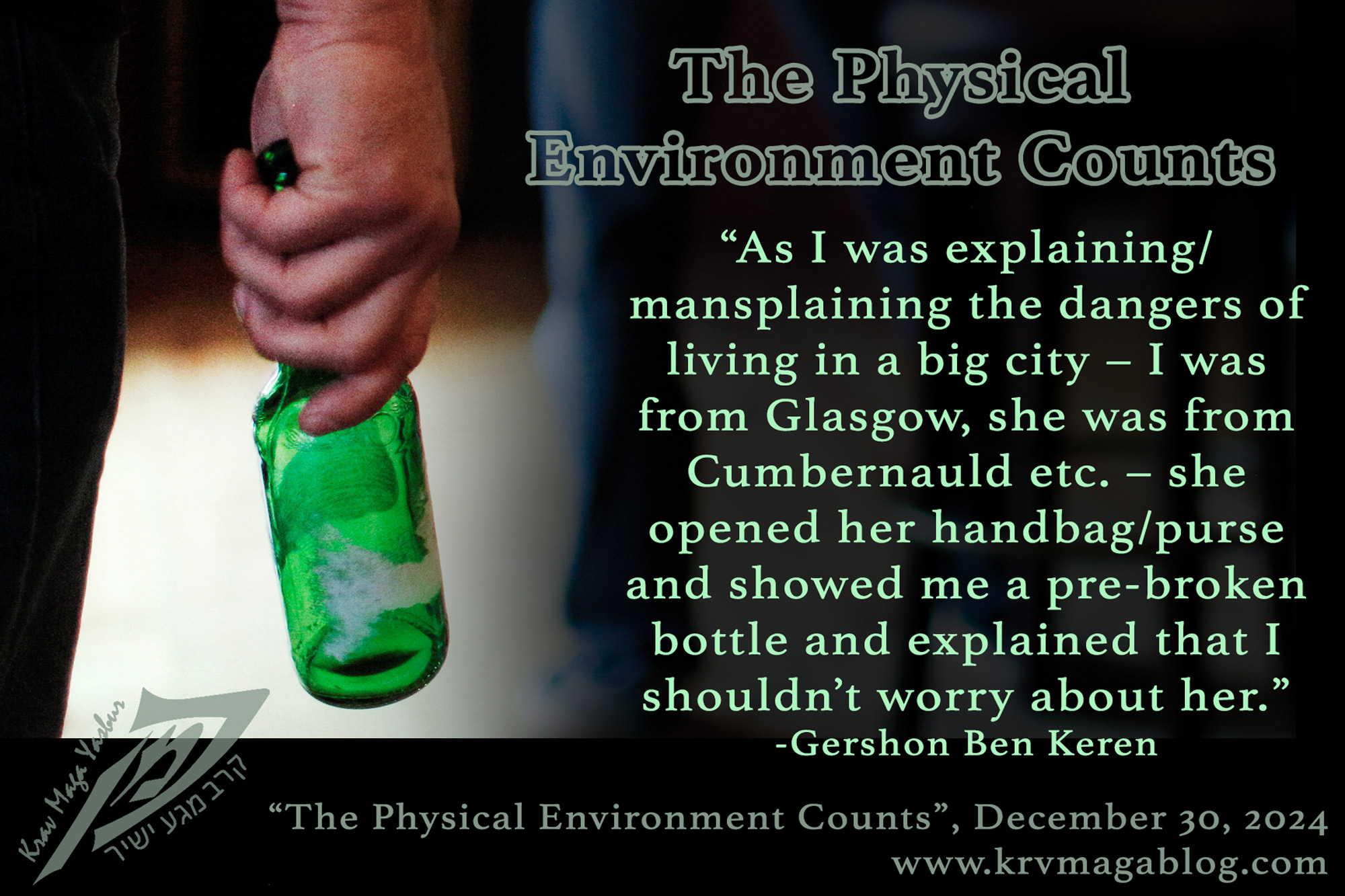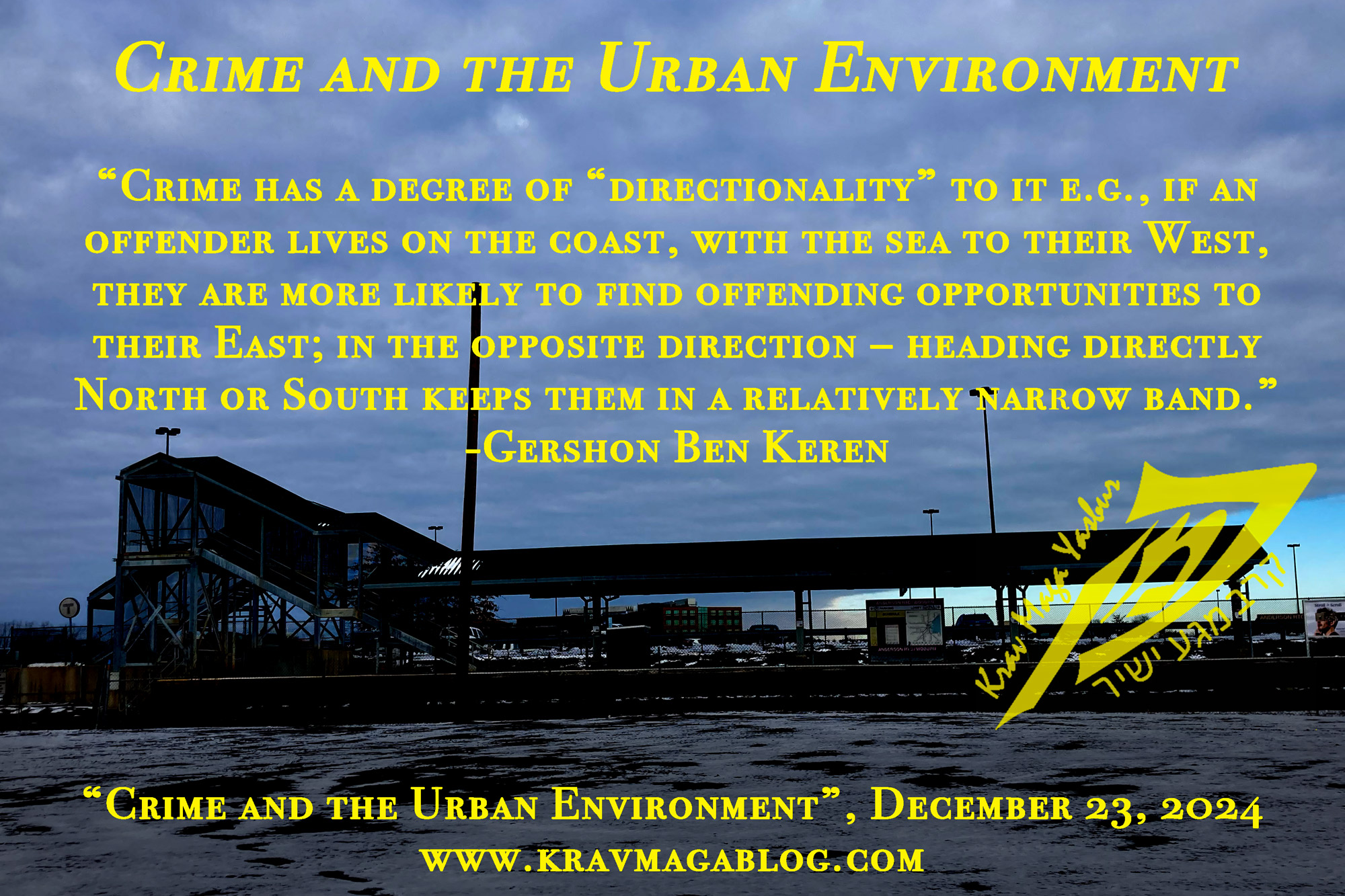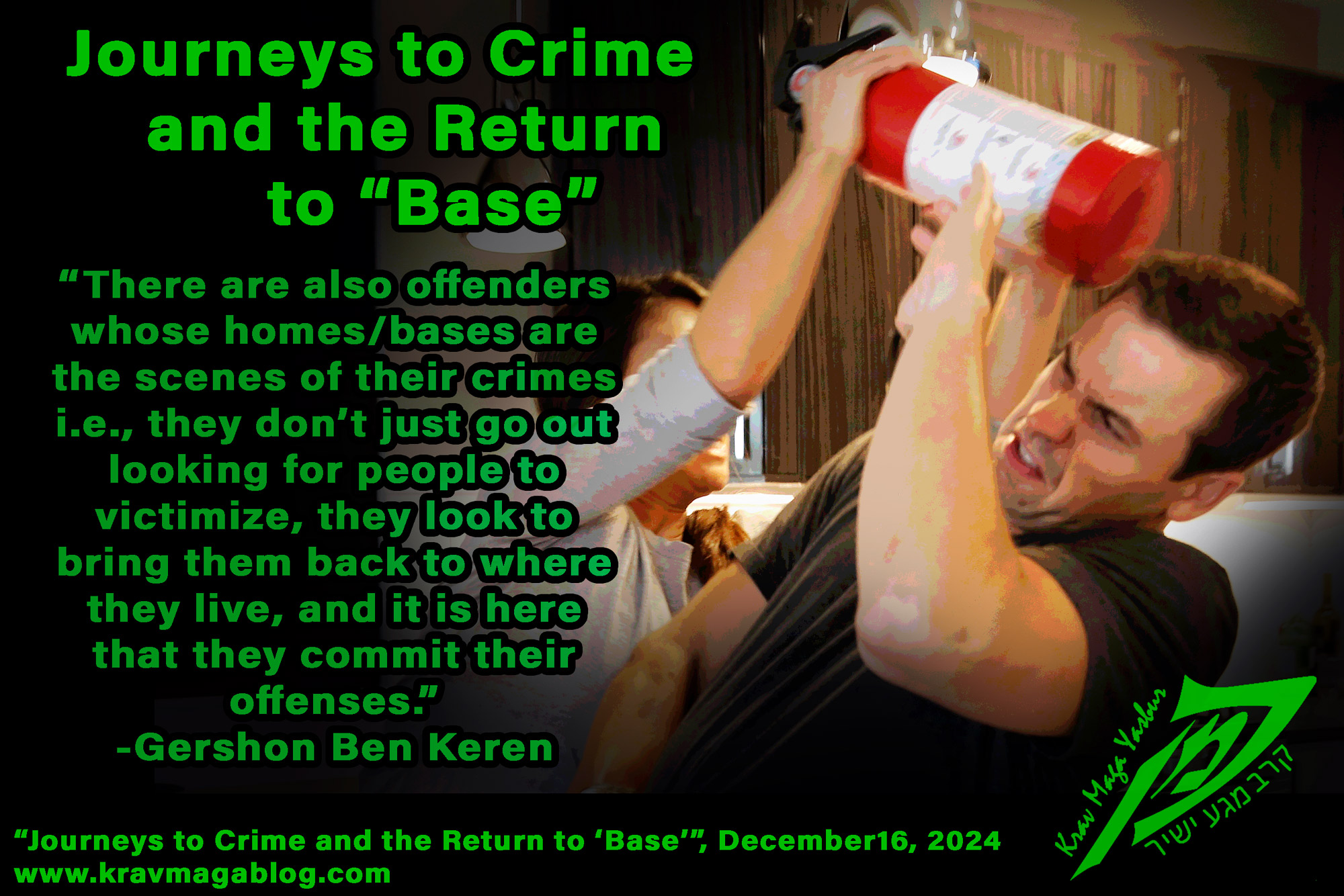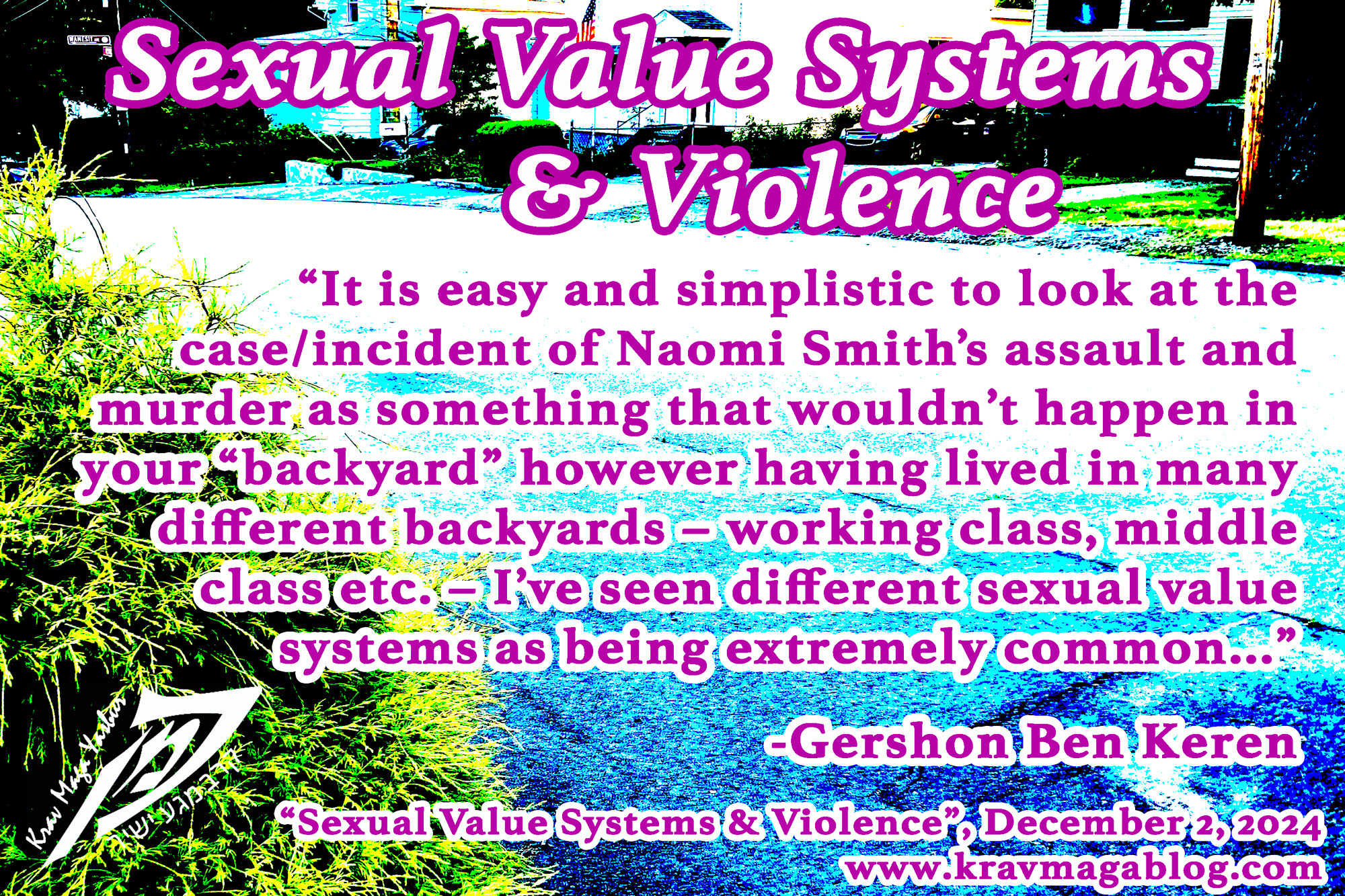Social Inclusion & Exclusion And Crime Prevention & Desistance, is an article written by Gershon Ben Keren, a 5th Degree Black Belt in Krav Maga, who teaches Krav Maga in Boston, MA. He has also authored three Amazon best-Selling Books on Krav Maga.
Crime, and violent crime, are not statistically common occurrences. This is not to diminish the seriousness of such events and the impact(s) that they can have on a person’s life. There tend to be two types of perpetrators, who engage in violence: persistent offenders who at some level actively look to engage in violence, and those who sometimes find themselves in social situations where they lack the skills, knowledge and/or awareness to prevent a verbal/social conflict from escalating to a physical one. Whilst persistent offenders may be motivated by a variety of factors that vary from the expressive to the instrumental e.g., frustration and a sense of injustice (expressive), and/or using violence for material gain, as in committing street robberies (instrumental), there is also a wide range of reasons as to why most persistent offenders at some point desist from offending. By looking at the factors that play a part in desistance, we may begin to understand the push and pull components that lead or contribute to violent offending in the first place.
Violence is a rejection of social norms and societal values, whether violent offending is committed by a normally law-abiding citizen in the moment, or a persistent offender who has embarked upon a criminal career which requires its use. It is this rejection, which is the scariest part of violence. Many people when they think about being involved in a physical altercation believe it is the fear of pain, injury and even death which is the most frightening part. Whilst these are certainly significant reasons to avoid being involved in a fight, the scariest part is the “unknown”. When someone chooses to use violence – and even in the “heat of the moment” violence is a choice (not necessarily a truly rational one) – they are rejecting the way in which society has “agreed” to deal with conflicts and disputes i.e., rationally, verbally and non-physically. When such a rejection occurs, anything and everything is potentially possible: there isn’t a predefined outcome. It is this unknown that makes violent incidents such frightening events. Whilst much research into desistance – the reasons why people stop offending – has looked at micro-level events on individuals, such as the effects of family, the moving away from criminal friends, and the effects of regular and rewarding employment etc., little has been conducted at the meso-level and macro-level, looking at societal effects, and social structures. If violence is considered and looked at from a social inclusion and social exclusion perspective, we may start to gain a better understanding of some of the reasons behind both persistent and serious/extreme violent offending (such as the recent Monterey Park shooting near Los Angeles – Saturday January 21st, 2023 – that left ten dead and the Evansville, Indiana shooting that took place the previous Friday).
When looking at desistance from violent offending, it is easy to reduce everything down to age, and the aging out of crime argument. If there is one thing that criminologists agree upon, is the statistical argument, that offending – including violent offending – peaks in adolescence, significantly reduces when people reach their mid-twenties, and continues to decline as they get older. I have written about this phenomenon before i.e., that crime and violence, by and large, is a young person’s game. However, there are those who don’t “age out” of violence, and some who take longer than others, so it is worth examining some of the reasons why, beyond emotional/psychological maturation, the influence of family members/partners over time, and the effects of employment etc. Whilst these are important factors, the desire for social inclusion is also a significant motivator, even if it is less tangible and harder to define/measure. Repeat offenders – generally looked on as those with two or more convictions – are often socially excluded, or are presented with barriers that prevent inclusion, such as having to acknowledge this criminal history on job applications etc. In this short article I am not making an argument that prospective employees don’t acknowledge past convictions etc., but rather demonstrating that those who may want to be socially included i.e., gain legal employment, can experience barriers that prohibit them from doing so. It is far easier for someone to desist from crime and violent offending, if they received a high school education and left with some form of qualification(s). Society has a tendency to “include” people, more readily, if they have received and/or can demonstrate a level of education. Exclusion can occur due to “labelling” at a young age, with someone being categorized as uneducated and a persistent offender e.g., a teenager who under-performs at school, and who picks up a couple of minor offenses, may start to be seen by society as someone who exists outside of it, and will therefore feel excluded from it.
When I present on active shooter/killer solutions and preventions in schools, one of the first things I talk about is social inclusion and exclusion. Whilst there is no single preventative solution to rampage killings in schools and colleges, social exclusion usually plays a part, and it should be recognized. Exclusion does not have to occur “actively” e.g., as a result of bullying etc., but can develop due to a person’s inability to fit in and socially communicate etc., and this needs to be identified and addressed. Whilst violent offending occurs at the micro-level, with the individual, the effects of social inclusion and exclusion (at the macro-level) cannot be ignored.
0 COMMENTS